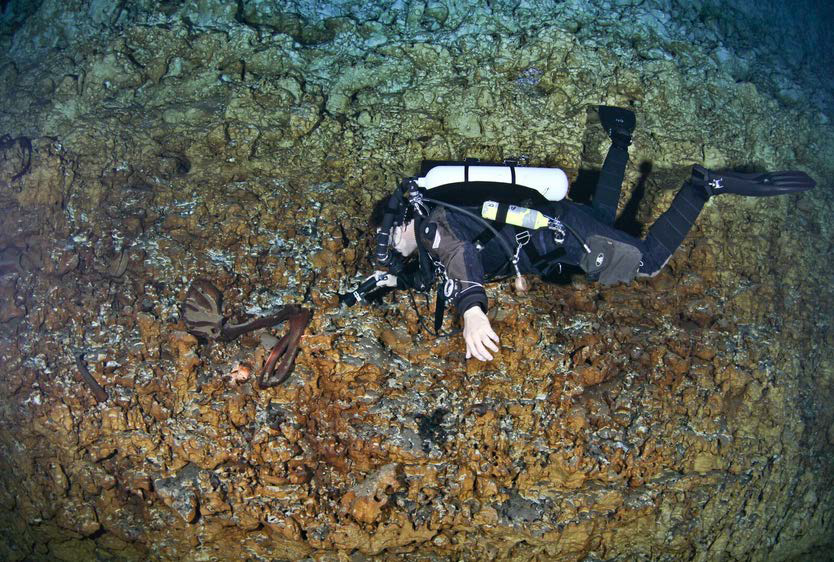Around the end of the last Ice Age, about 13,000 years ago, animals could roam through subterranean passageways in what is now Mexico. But the creatures who reached the end of those passageways often plunged to their death in a pit descending 180 ft (55 m) into the Earth from which there was no escape. Researchers have been exploring that pit, which is now underwater, and discovering a remarkable collection of fossils. Their findings will be presented at this year's annual meeting of the Society of Vertebrate Paleontology in Calgary, Canada on August 26.
About three million years ago, thanks to the collision of the Pacific and Caribbean tectonic plates and significant volcanic activity, the Panamanian land bridge emerged. This strip of land not only cut off the Atlantic and Pacific ocean, dramatically altering those giant bodies of water, but it also allowed the intermingling of species between the North American and South American continents. Animals including the armadillo, porcupine and opossum headed north, and the ancestors of animals including dogs, horses, bears and raccoons traveled south.
This period in time is called the Great American Interchange, and it was a period of significant species migration with 38 genera of mammals walking north and 47 walking south. While the Interchange took place millions of years ago, the Panamanian land bridge has continued to provide an important route for mammals traveling between the two continents in the Western Hemisphere, including the period of the last Ice Age. However, according to the Society of Vertebrate Paleontology, fossils from this region, which now includes southern Mexico and Central America, have been rare.
That changed with the discovery of the fossils embedded in the underwater pit known as "Hoyo Negro," meaning "black hole" in Spanish.

"[The] preservation of the fossil material is extraordinary, and will allow us to reconstruct various aspects of anatomy, evolutionary relationships, and behavior," says Dr. Blaine Schubert of East Tennessee State University, one of the lead researchers on the project. "The diversity of the fauna gives us an exciting new picture of this region in the midst of rapid climatic and environmental change."
Thus far, a team of technical cave divers has been exploring and photographing the area using special rebreathing SCUBA equipment that keeps bubbles from disturbing the site. Fossils belonging to sabertooth cats, mountain lions, short-faced bears and tapirs have been found, as well as the remains of three different kinds of giant ground sloths – including a never-before-seen species. The pit also holds the bones of a gomphothere, a distant relative of today's elephant that went extinct about 11,700 years ago.
Schubert says the bear find was a surprise. "The remains of the short-faced bear Arctotherium are particularly significant, representing not only the most complete and abundant material from one location, but also the first evidence that they crossed from South America into North America," he said.
Perhaps most interestingly of all, the pit contains a significant female human skeleton.

"This represents the oldest and most complete early human skeleton in the Americas, and she co-existed with a variety of megafauna," said Schubert.
The team of researchers, including representatives from both the US and Mexico will continue to explore and document the Black Hole hoping to uncover even more information about the ecology of the land bridge, which is considered to be "one of the most important geologic events to happen on Earth in the last 60 million years," according to NASA.
Source: Society of Vertebrate Paleontology via EurekAlert







